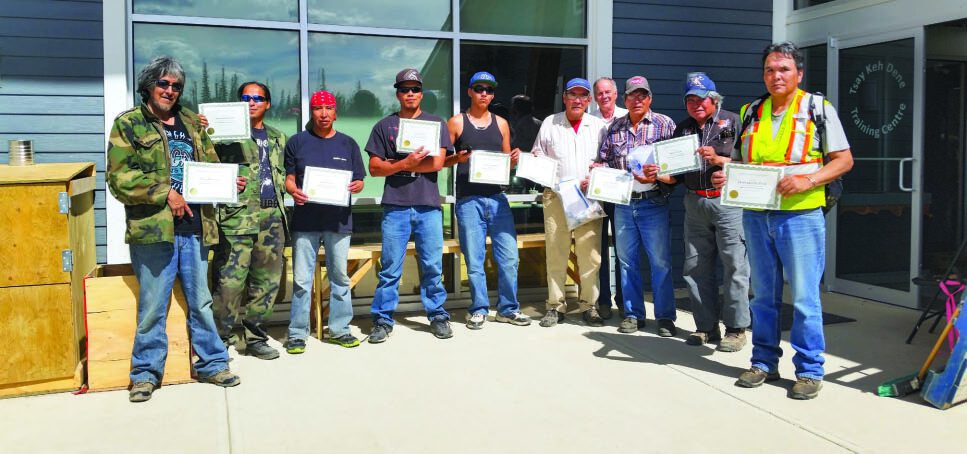
The mineral exploration industry is relatively small: specially trained personnel, little to no production and grassroots projects with field crews averaging fewer than 10 people. When we attend conferences or arrive at a remote camp, whether locally, regionally or nationally, we tend to know or know of most of the people there. Expanding our networks to include the First Nations in whose territories we explore seems only natural.
Ken MacDonald worked for Canada Zinc Metals Corp. on its Akie project in northeastern B.C., near the north end of the Williston Reservoir, approximately 600 kilometres from Prince George. Here he met several members of the Tsay Keh Dene and Kwadacha First Nations, whom he hired as driller helpers and field assistants. Camp talk led to community discussions that culminated in MacDonald putting on a prospecting course in July of 2015.
“I knew I wanted to give the basic prospecting course because of [their] expressed interest in learning about rocks and minerals and exploration,” says MacDonald. “I had an outline of the basic course that the Ministry of Energy and Mines used to give back in the 1990s and early 2000s.”
After speaking with Kwadacha and Tsay Keh Dene community co- ordinators, MacDonald next approached John DeGrace, a fellow member of the Prince George Exploration Group (PEG). DeGrace had served as regional geologist in the district for two years and then spent several years at the University of Northern British Columbia (UNBC) before returning to mineral exploration fieldwork. DeGrace updated the Ministry of Energy and Mines’ old presentation materials to turn them into a full two-day course. Through PEG, MacDonald requested, and received, support from A ME BC ’s Aboriginal Relations Committee.
“It took very little time to put [the course] together,” says MacDonald. “A day or two to prepare the [funding request] proposal for AME BC, [and] perhaps a week to edit the presentation and gather other materials.” While the two instructors brought their own common field tools to show and demonstrate for the students, each participant was given a personal set of handouts; a mineral streak plate; a hand lens; and a mineral specimen kit with common rock-forming minerals, common rock types and ore minerals to keep. AME BC and the Mining Association of British Columbia supplied mineral kits, educational videos, posters and handouts.
On July 8 and 9, the basic prospecting course was held in the community of Tsay Keh Dene. Interested students had applied through their respective communities, and the final class was made up of 10 participants from Tsay Keh Dene and one from the Kwadacha Nation. Beyond the classroom component of basic rock and mineral identification, map reading and orientation, students also had the opportunity to learn basic prospecting field skills, including outcrop evaluation, sample collection and geological field measurements. A certificate of completion was awarded to each student at the end of the course.
“The course was well received in the community of Tsay Keh Dene, and the comments of those who completed the course were uniformly positive. It is clear that there is a great deal of interest in courses of this sort,” say the instructors. With the success of this first course behind them, what lies ahead for their outreach program?
“I’m interested in providing a more advanced prospector course in Tsay Keh Dene and Kwadacha [Nation] if funding can be found. Tsay Keh Dene has committed to looking into what funding they might tap into,” says MacDonald. “There is nothing planned at the moment, but there is definitely interest in other aspects of the industry as well, such as staking claims, marketing and optioning claims, and learning about placer mining and gold panning.”
“Through continuing studies at UNBC , I will be offering a three-day course in basic prospecting in the spring of 2016,” adds DeGrace. “The Prince George regional office of [the Ministry of ] Energy and Mines provided us with a large collection of miscellaneous specimens, mostly from mineral deposits, and we have retained these for future courses.”
Although PEG is still smaller in size than its counterparts in Smithers and Kamloops, the group is hoping to pull together a pool of potential instructors for these types of courses as well as additional educational and public outreach. Funding to develop and expand courses is always a challenge, but expanding our network to include every community is priceless.
